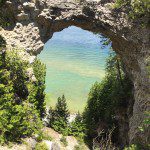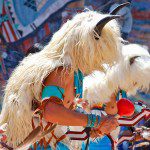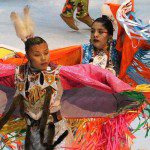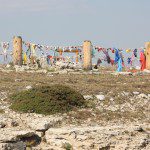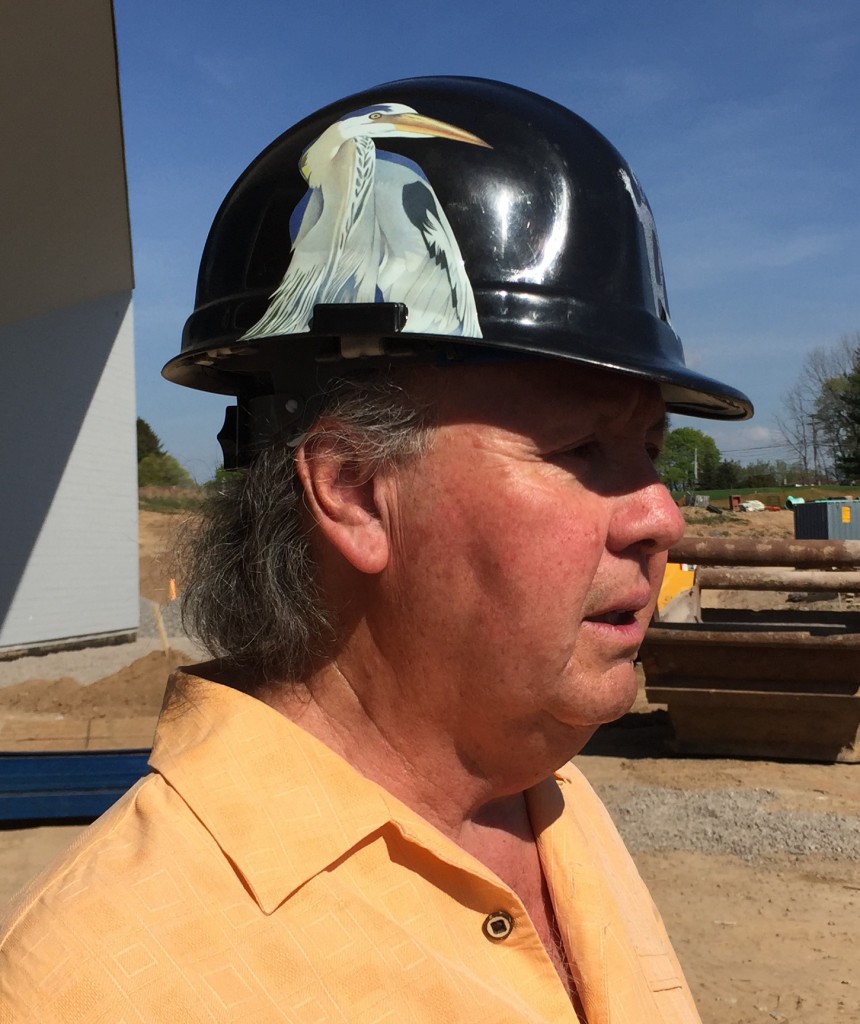
Today’s post is by guest blogger Bob Sessions:
Construction workers don’t usually have beautiful images of herons on their hats, but Peter Jemison isn’t your ordinary construction worker. In fact, he’s manager of Ganondagan, a New York State Historic Site near Victor (and the hat is temporary, just until the site’s new Seneca Art and Culture Center is completed).
Lori and I met Peter Jemison when we were at a meeting of the Midwest Travel Writers Association in the Finger Lakes of New York. In talking with him and touring the site, I remembered a nearly forgotten thread in my own life as well as learned about the revitalized spiritual and cultural traditions of the Seneca people.
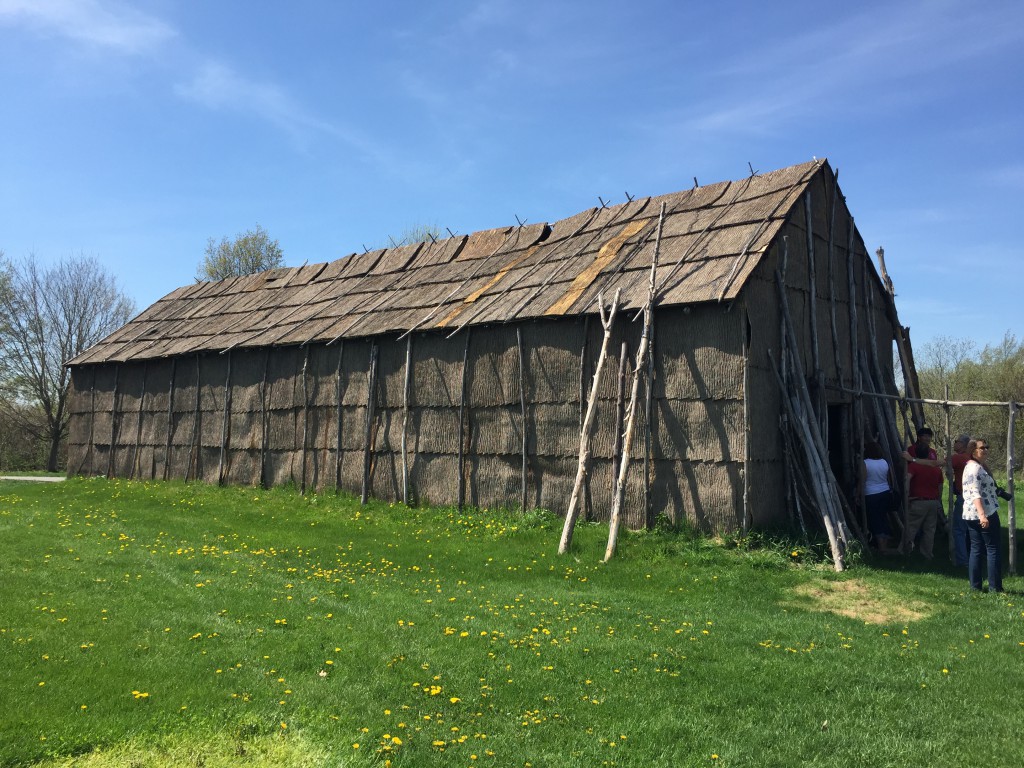
Ganondagan is located on the site of a 17th-century Seneca settlement of 4,500 people. In 1687, it was attacked and burned by the French as part of their efforts to monopolize the fur trade. Three centuries later, New York State reestablished the site, rebuilding a long house similar to those of the original settlement as a way to honor Seneca traditions and educate the larger world about their history. The Seneca are one of the six nations that comprise the Iroquois (also known as the Haudenosaunee) Confederacy, whose democratic ideals helped inspire the U.S. Constitution.
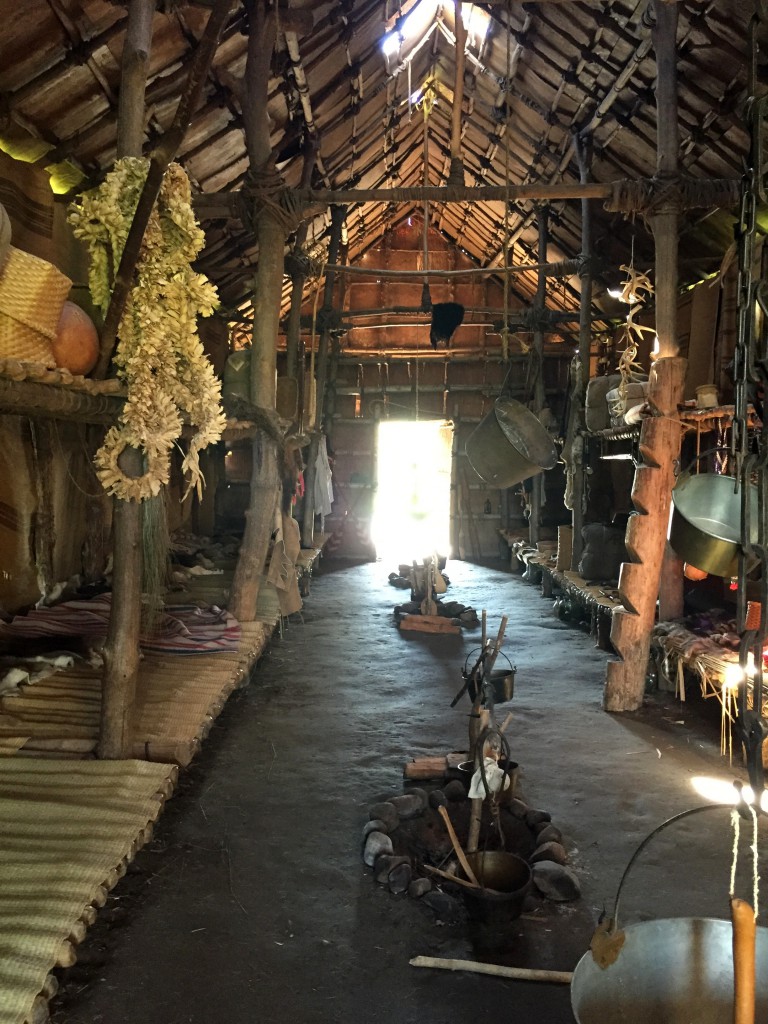
Part way through our tour, I had a flash of recognition when I heard the name John Mohawk mentioned. I was taken back to my undergraduate days when I first encountered Akwesasne Notes, a publication he founded and edited. For most of two decades I avidly read this journal. Because of Mohawk’s influence, I began a lifelong study of First Nations cultures, anthropology, histories, and philosophies. I taught college courses on Native American philosophies (always with some trepidation, for these are very different cultures than my own). I encountered many students who, like me, were transformed when they encountered philosophers and visionaries such as Mohawk.
I was happy to see the ways in which Mohawk’s philosophy continues to live on at Ganondagan, particularly in its Iroquois White Corn Project. Kim Morf, project manager, told us how John Mohawk had begun the initiative in the late 1990s because he realized that the deteriorating health of his people was due in part to their modern diets. His solution was a version of eating local and organic food, but with a twist—for he knew that health involves much more than just taking in nutrients.
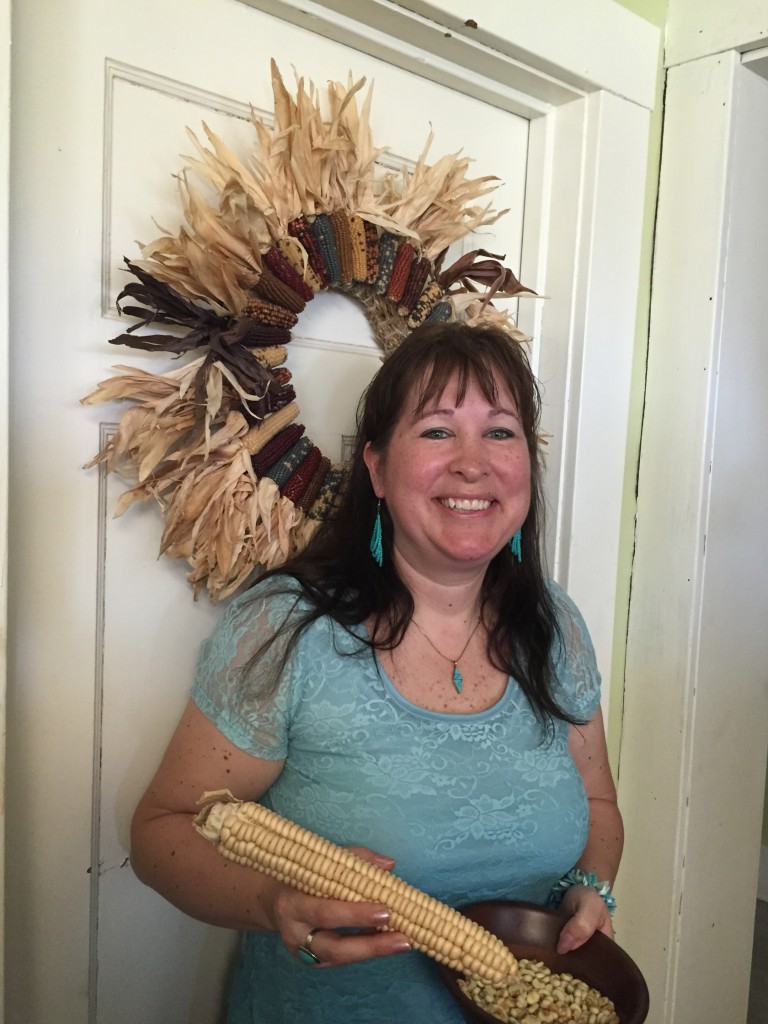
Thus was born the White Corn Project. The Senecas at Ganondagan use a native variety of corn that dates back at least 1,400 years. Volunteers keep the old agricultural methods alive by planting, tending, husking and grinding the corn in traditional ways. In doing so, they also nurture bonds of community and continue rituals their people have done for millennia.
This ancient form of white corn, it turns out, has many beneficial characteristics, including being less sweet and more nutritious than modern corn. One of our guides told me of how she, like many in her Seneca community, suffered from diabetes and related conditions. “Western medical treatment made me sick, and so I gave John Mohawk’s way a try for three months,” she told me. “After eating white corn grits for breakfast instead of processed food my blood sugar returned to healthy levels.”
I would guess her improved health is also due to the community support and cultural grounding she receives by being part of the White Corn Project, for those are as healing as the nutrients in the corn. Everyone who works with the corn is supposed to have “good mind,” meaning that they have loving and good intentions. It is believed that this spirit passes into the corn and benefits those who eat it (you can buy various products using this white corn through the Iroquois White Corn Project).
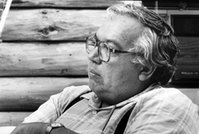
The climax of our visit came when we toured the new $13 million Seneca Art and Culture Center, which will open this fall. It was there that I met the man mentioned above, Peter Jemison. He is a cousin of John Mohawk and has been laboring to bring the center into being for 15 years (a talented artist, Jemison drew the heron on the hard hat pictured above because he is a member of the Heron Clan of the Seneca).
“This project takes us from a six-month operation to a year-round facility,” he told our group. “Our goal is to tell the world that we are not a people in the past tense. We live today. We have adapted to the modern world, but we still maintain our language, ceremonies, land base, government, lineages and culture. When you’re a native person, your story is often told by other people. Here, we tell our own story.”
The new center will feature educational displays and facilities, an orientation theater, a multi-purpose auditorium, gallery space, a catering kitchen, and gift shop. A highlight will be Iroquois Creation Story, a film produced by Jemison that is based on a retelling by John Mohawk of a traditional story.
I hope to go back to Ganondagan‘s Seneca Art and Culture Center once it opens, but even in incomplete form, I found it very moving. As we were leaving, I was proud to shake Peter Jemison’s hand and tell him of my own connection to his remarkable cousin. Despite our brief acquaintance, I felt a deep connection with him. After all, we shared the same mentor, John Mohawk, whose spirit lives on in me as well as in him.
For More Information: Ganondagan New York State Historic Site; Finger Lakes Visitors Connection


